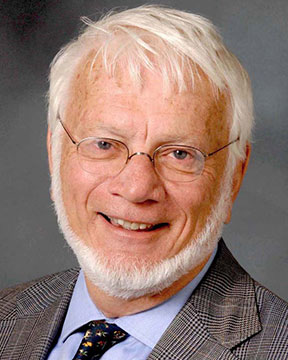ORALS
SESSION: MoltenMonAM-R3
| Fehrmann International Symposium on Sustainable Molten Salt and Ionic Liquid Processing (6th Intl. Symp. on Sustainable Molten Salt and Ionic Liquid Processing) |
| Mon Nov, 5 2018 / Room: Bossa (150/3rd) | |
| Session Chairs: Anders Riisager; Session Monitor: TBA |
12:10: [MoltenMonAM03] Keynote
Spectroscopy and Catalysis: The Operando Methodology and Reaction Monitoring, Tools to Understand Structure-Activity Relationships Miguel
Banares1 ; Raquel
Portela
1 ; Mariví
Martinez Huerta
1 ; Pedro
Avila
1 ; Susana
Pérez Ferreras
1 ; Søren Birk
Rasmussen
1 ; Vanesa
Calvino Casilda
2 ; Alba E.
Diaz Alvarez
1 ; Ines
Reyero
1 ; Katarzyna
Stawicka
3 ; Maciej
Trejda
3 ; Maria
Ziolek
3 ; Olga
Guerrero
4 ; Marco
Daturi
5 ; Philippe
Bazin
5 ; Guillaume
Clet
5 ; Zhenyou
Gui
6 ; Nanette
Zahrtmann
7 ; Shunmugavel
Saravana
6 ; Zhiwen
Qi
8 ;
Anders
Riisager7 ; Eduardo J.
García Suárez
7 ;
1Institute for Catalysis and Petroleum Chemistry (CSIC), Madrid, Spain;
2ETS de Ingenieros Industriales, UNED, Madrid, Spain;
3Adam Mickiewicz University, Poznan, Poland;
4University of Malaga, Malaga, Spain;
5LCS University of Caen Normandy, Caen, France;
6DTU Chemistry, Lyngby, Denmark;
7DTU Chemistry, Kgs. Lyngby, Denmark;
8East China University of Science and Technology, Shanghai, China;
Paper Id: 403
[Abstract] Spectroscopy is an enabling tool to understand structure-reactivity relationships, that can be applied from predicting toxicity of nanomaterials to engineer better catalytic processes. Operando methodology analyzes both, the catalyst structure and its activity/selectivity simultaneously in a cell that is fit for in situ spectroscopy and performs like a catalytic reactor; correlating structure changes with catalytic performance. Some representative works illustrate this. 1-3 We will present a study on the role of additives, support, coverage, hydration and reaction conditions on the states of supported vanadium and its relevance for catalytic reaction and reducibility. This is applied to assess the molecular basis for activation/deactivation and the nature of the catalyst active site for oxide reduction, alkane oxidative dehydrogenation, ammoxidation and for environmental selective catalytic reduction of NOx. We will also illustrate the capacity of real time spectroscopy to understand reaction mechanism for liquid phase reactions,4 like the role of Brønsted Acid Sites (BAS) vs. that of Lewis Acid Sites (LAS) for the acetalization of glycerol into solketal. Mesoporous cellular foams modified to contain exclusively BAS, LAS and combinations thereof illustrate the role of BAS.4 This relevance led us to use novel Brønsted acid ionic liquids (BAILs).5 The transversal nature of the operando approach places it at the junction between fundamental catalytic chemistry and applied chemical engineering. This work is supported by European Commission BIORIMA GA 760928 and Spanish Ministry RIEN2O, CTM2017-82335-R.
References:
[1] Calvino-Casilda, V.; Stawicka, K.; Trejda, M.; Ziolek, M.; Banares, M. A. Real-Time Raman Monitoring and Control of the Catalytic Acetalization of Glycerol with Acetone over Modified Mesoporous Cellular Foams. J. Phys. Chem. C 2014, 118 (20).
[2] Stawicka, K.; Díaz-Álvarez, A. E.; Calvino-Casilda, V.; Trejda, M.; Banares, M. A.; Ziolek, M. The Role of Brønsted and Lewis Acid Sites in Acetalization of Glycerol over Modified Mesoporous Cellular Foams. J. Phys. Chem. C 2016, 120 (30), 16699–16711.
[3] Gui, Z.; Zahrtmann, N.; Saravanamurugan, S.; Reyero, I.; Qi, Z.; Banares, M. A.; Riisager, A.; Garcia-Suarez, E. J. Brønsted Acid Ionic Liquids (BAILs) as Efficient and Recyclable Catalysts in the Conversion of Glycerol to Solketal at Room Temperature. ChemistrySelect 2016, 1 (18).
SESSION: MoltenTueAM-R3
| Fehrmann International Symposium on Sustainable Molten Salt and Ionic Liquid Processing (6th Intl. Symp. on Sustainable Molten Salt and Ionic Liquid Processing) |
| Tue Nov, 6 2018 / Room: Bossa (150/3rd) | |
| Session Chairs: Robin Rogers; Session Monitor: TBA |
12:10: [MoltenTueAM03]
Ionic Liquid Promoted Synthesis of Aryl Ureas in Pd-catalyzed Oxidative Carbonylation Anders
Riisager1 ; Nanette
Zahrtmann
1 ; Cyril
Godard
2 ; Carmen
Claver
2 ; Eduardo J.
García Suárez
1 ;
1DTU Chemistry, Kgs. Lyngby, Denmark;
2Universitat Rovira i Virgili, Tarragona, Spain;
Paper Id: 245
[Abstract] Ureas are important compounds found in the structures of a large number of biologically active compounds and widely used as agrochemicals, dyes, antioxidants, and HIV inhibitors, as well as key intermediates in organic synthesis [1]. Ureas can be prepared via the oxidative carbonylation of amines in the presence of a Pd-complex catalyst, usually at high pressure and temperature and under an explosive CO/O<sub>2</sub> gas mixture making the overall system unsafe [2]. Accordingly, it is desirable to develop an active catalytic system applicable for the oxidative carbonylation of amines under milder reaction conditions.<br />Ionic liquids (ILs) can have beneficial effects in many homogeneously catalyzed reactions [3]. Furthermore, the use of ILs in liquid-liquid biphasic reactions makes processes in many cases greener than when using traditional organic solvents, due to associated advantages such as low vapor pressure, as well as good thermal stability, tunable solubility, and coordination properties [4]. In addition, such systems provide good separation of reaction products and catalyst recovery.<br />In this work, we present a new efficient, robust, and versatile Pd-complex/IL catalytic biphasic system for the oxidative carbonylation of aromatic amines under mild reaction conditions [5]. Reaction parameters, including oxidant agent, pressure, temperature, catalyst and IL loading were optimized, resulting in a catalytic system which operates under mild conditions, is fully recyclable, is 100% selective and has activity two orders of magnitude higher than previously reported systems [6].
References:
[1] D. J. Diaz, A. K. Darko, L. McElwee-White, Eur. J. Org. Chem., 27 (2007) 4453.\n[2] S.-Z. Zheng, X.-G. Peng, J.-M. Liu,W. Sun, C.-G. Xia, Chin. J. Chem., 25 (2007) 1065.\n[3] Supported Ionic Liquids: Fundamentals and Applications, R. Fehrmann, A. Riisager, M. Haumann, Wiley-VCH, 2014.\n[4] M. Haumann, A. Riisager, Chem. Rev., 108 (2008) 1474.\n[5] N. Zahrtmann, C. Claver, C. Godard, A. Riisager, E. J. Garcia-Suarez, ChemCatChem, DOI: 10.1002/cctc.201800004.\n[6] B. Chen, S. S. C. Chuang, Green Chem., 5 (2003) 484.
SESSION: MoltenTuePM1-R3
| Fehrmann International Symposium on Sustainable Molten Salt and Ionic Liquid Processing (6th Intl. Symp. on Sustainable Molten Salt and Ionic Liquid Processing) |
| Tue Nov, 6 2018 / Room: Bossa (150/3rd) | |
| Session Chairs: Anja-Verena Mudring; Session Monitor: TBA |
14:00: [MoltenTuePM105]
Upgrading of Biogas Using Supported Ionic Liquid Phase (SILP) Materials Leonard
Schill1 ; Frederik
Bork Jansen
1 ; Christian
Weibel
1 ;
Anders
Riisager2 ;
Rasmus
Fehrmann1 ;
1DTU Chemistry, Lyngby, Denmark;
2DTU Chemistry, Kgs. Lyngby, Denmark;
Paper Id: 72
[Abstract] Upgrading of biogas requires the removal of both CO<sub>2</sub> and H<sub>2</sub>S. Amino Acid based ionic liquids (AA-ILs) are known to efficiently remove CO2 by binding to the carboxylate group and DFT studies suggest that H<sub>2</sub>S can bind to both the carboxylate and the amine group of the amino acid anion. This study has demonstrated that that indeed two moles of H<sub>2</sub>S can bind to one mole of [P4444][Pro] even when a highly dilute stream (750 ppm) is used. Adsorption to the stronger sites (amine groups) is possible even in the presence of a vast excess of CO<sub>2</sub>. There is reason to believe that H<sub>2</sub>S removal levels of > 90 % could be maintained for several days at a space velocity of 100 h-1 with an H<sub>2</sub>S inlet concentration of 750 ppm. Potential pressure drop problems were solved by impregnating the ionic liquid onto mesoporous pellets prepared by a simple and scalable technique. H<sub>2</sub>S removal under relatively mild conditions (60 °C, 50 mbar) was unsuccessful and raises concerns about the ability to regenerate [P4444][Pro]. This might also mean that pure CO<sub>2</sub> removal using [P4444][Pro] requires gas streams practically free of H<sub>2</sub>S.
References:
[1] Angelidaki, I.; Treu, L.; Tsapekos, P.; Luo, G.; Campanaro, S.; Wenzel, H.; Kougias, P. G. Biogas upgrading and utilization: Current status and perspectives. Biotechnology Advances 2018, 36, 452-466, doi:10.1016/j.biotechadv.2018.01.011.
[2] Strauch, S.; Krassowski, J.; Singhal, A. Biomethane Guide for Decision Makers Policy - guide on biogas injection into the natural gas grid. Frauenhaofer UMSICHT, Research group biogas technology 2013. http://www.greengasgrids.eu/fileadmin/greengas/media/Downloads/Documentation_from_the_GreenGasGrids_project/Biomethane_Guide_for_Decision_Makers.pdf
[3] Liu, S.; Zhou, H.; Song, Q.; Ma, Z. Journal of the Taiwan Institute of Chemical Engineers Synthesis of higher alcohols from CO 2 hydrogenation over Mo-Co-K sulfide-based catalysts. 2017, 76, 18-26, doi:10.1016/j.jtice.2017.04.007.
[4] Kaas-Larsen, P. K.; Thomassen, P.; Schill, L.; Mossin, S.; Riisager, A.; Fehrmann, R. Selective Reversible Absorption of the Industrial Off-Gas Components CO 2 and NO. ECS Trans. 2016, 75, 3-16, doi:10.1149/07515.0003ecst.
[5] Jansen, F. B.; Weibel, C. Selective absorption of gases by ionic liquids. Bachelor Thesis, Technical University of Denmark, Kgs. Lyngby, Denmark 2017.



















